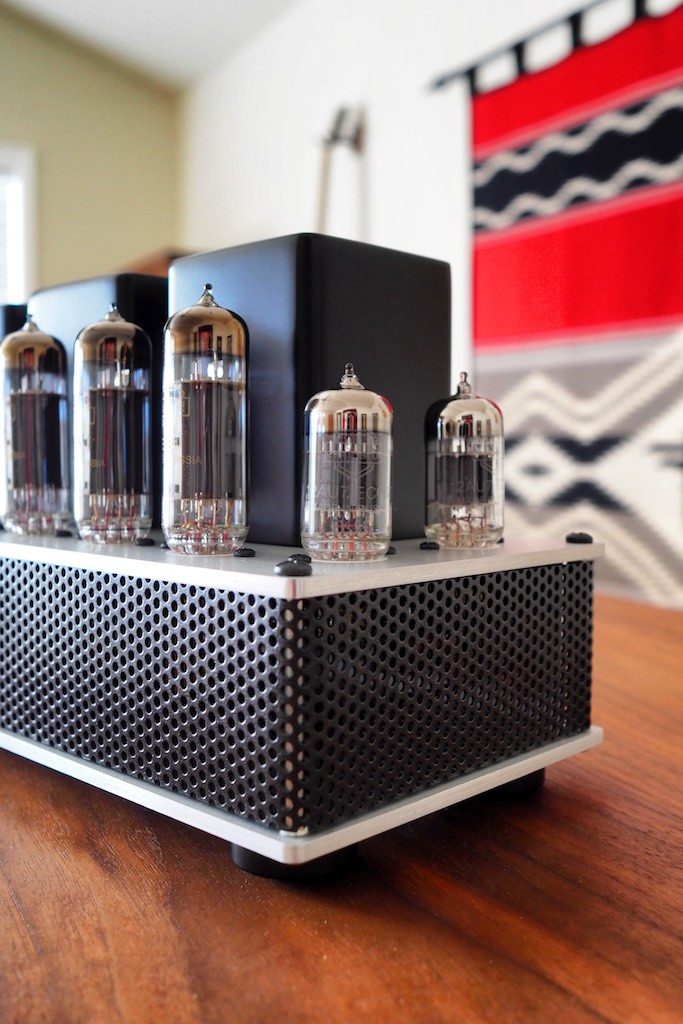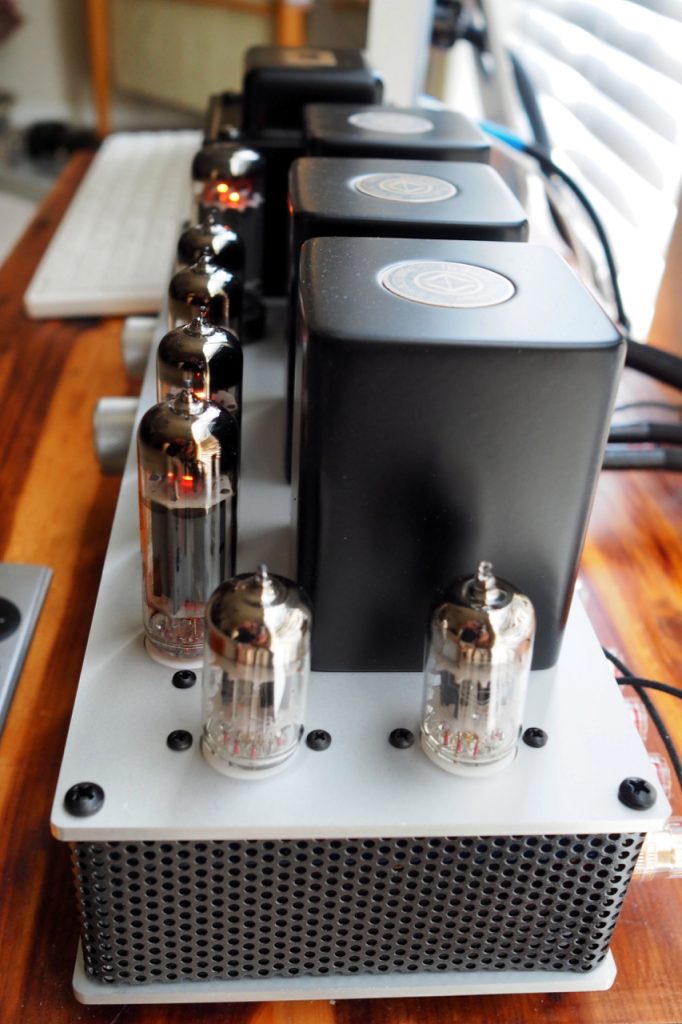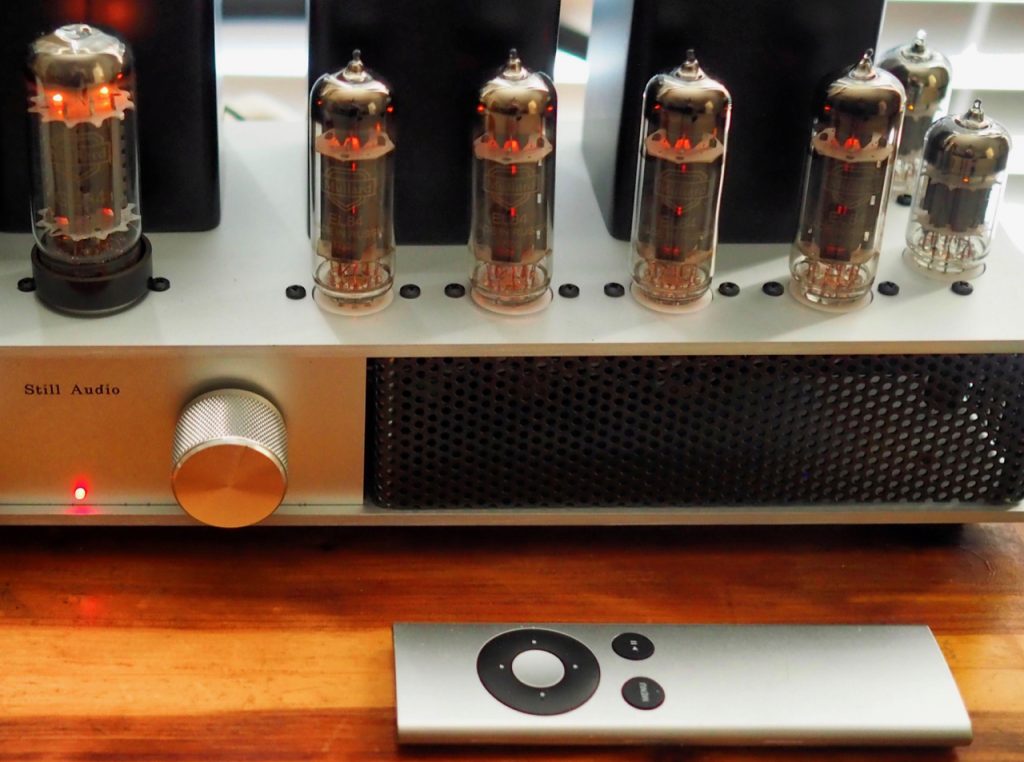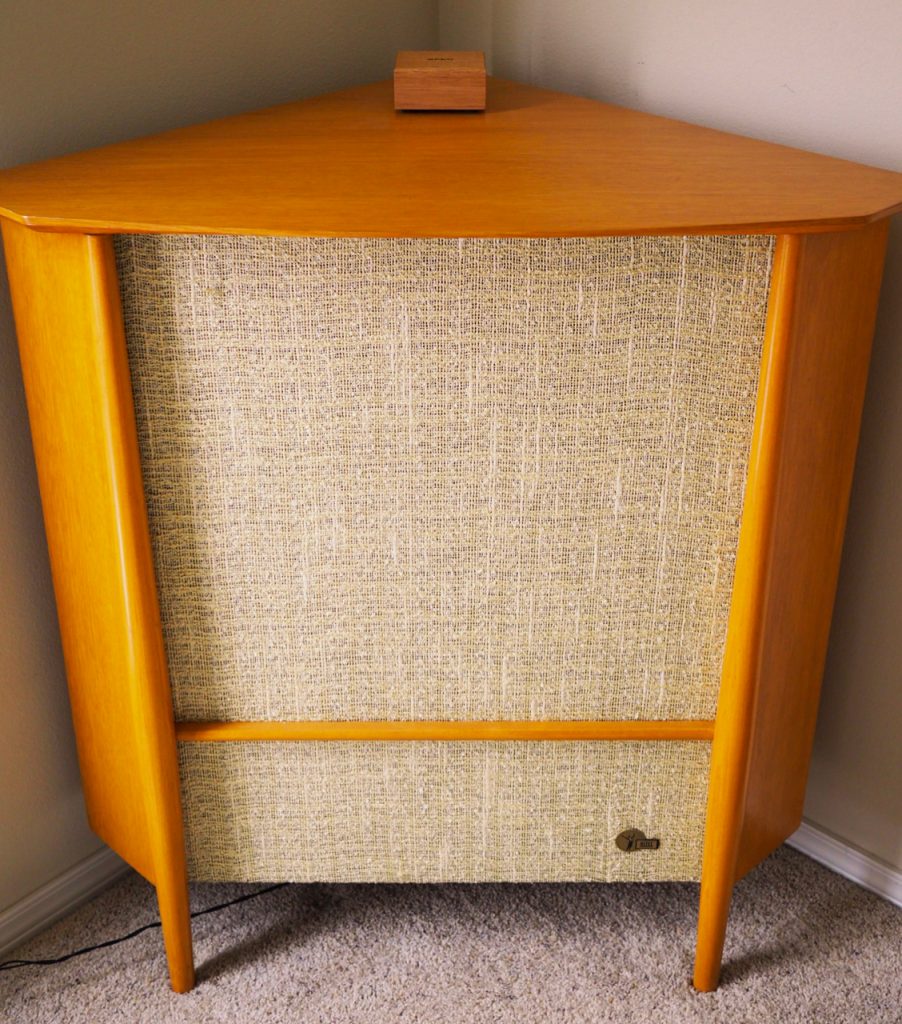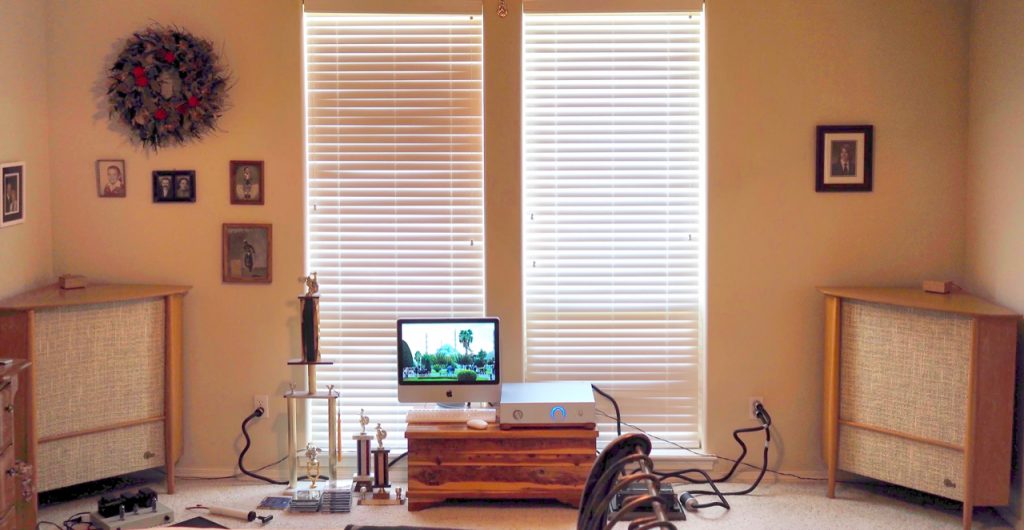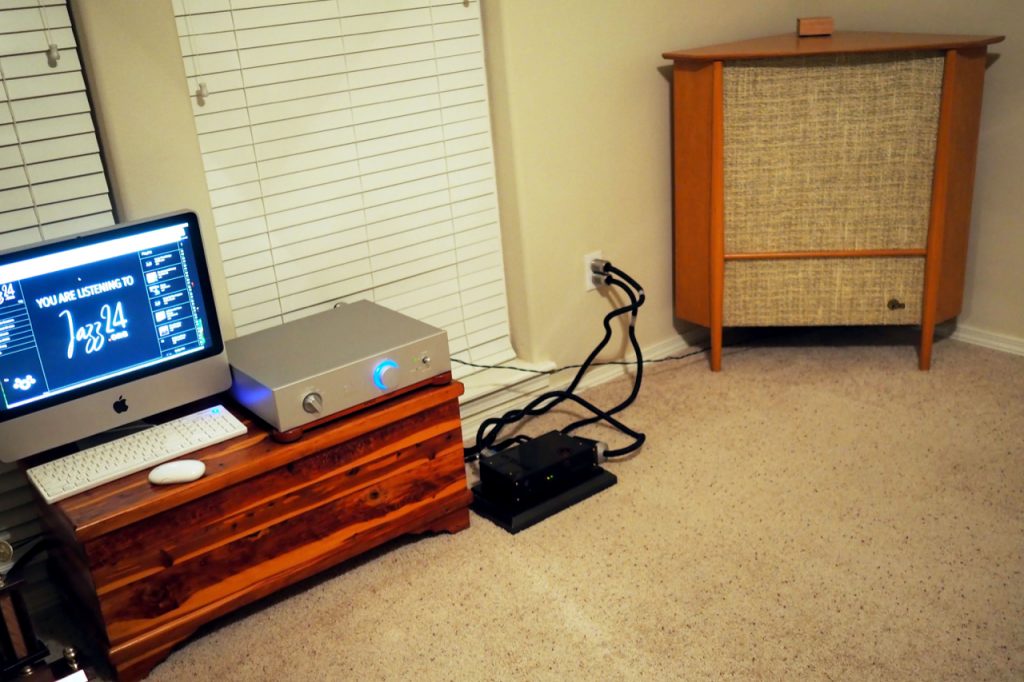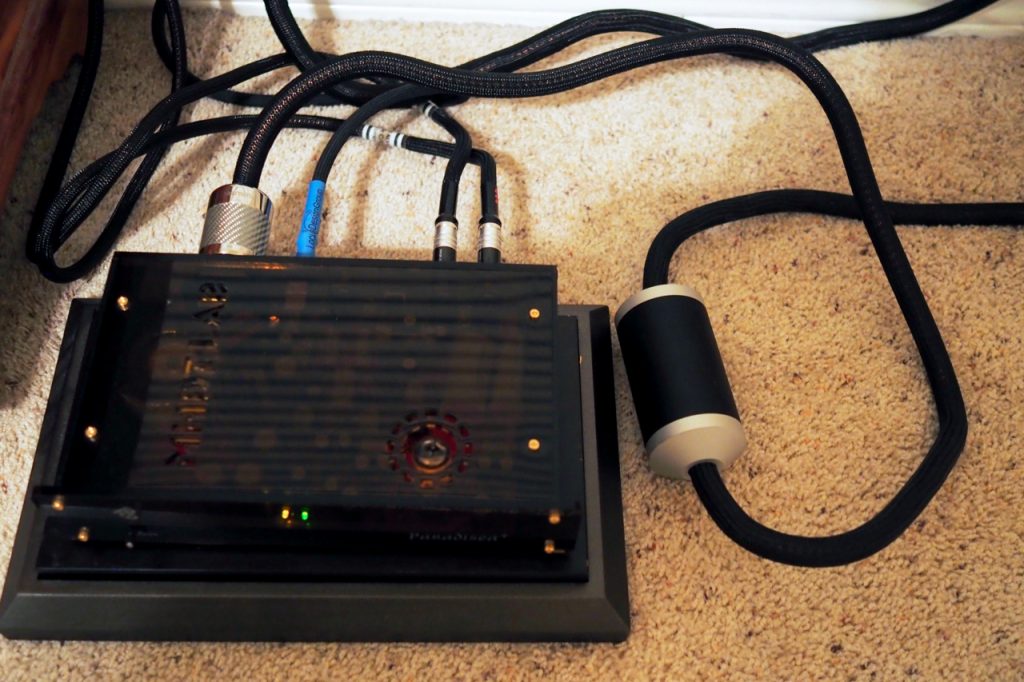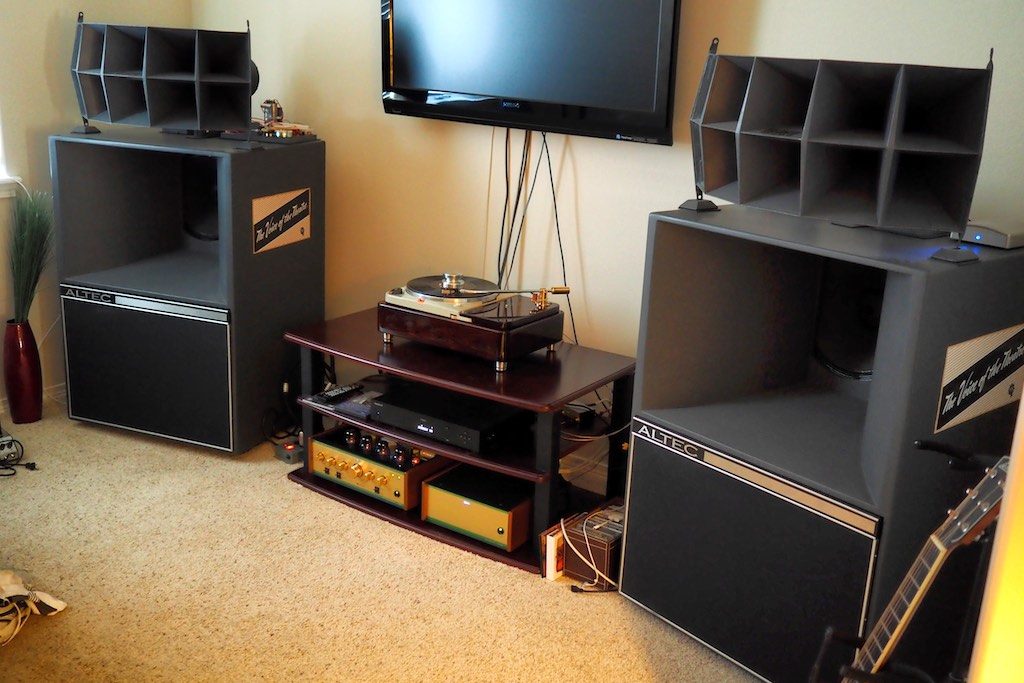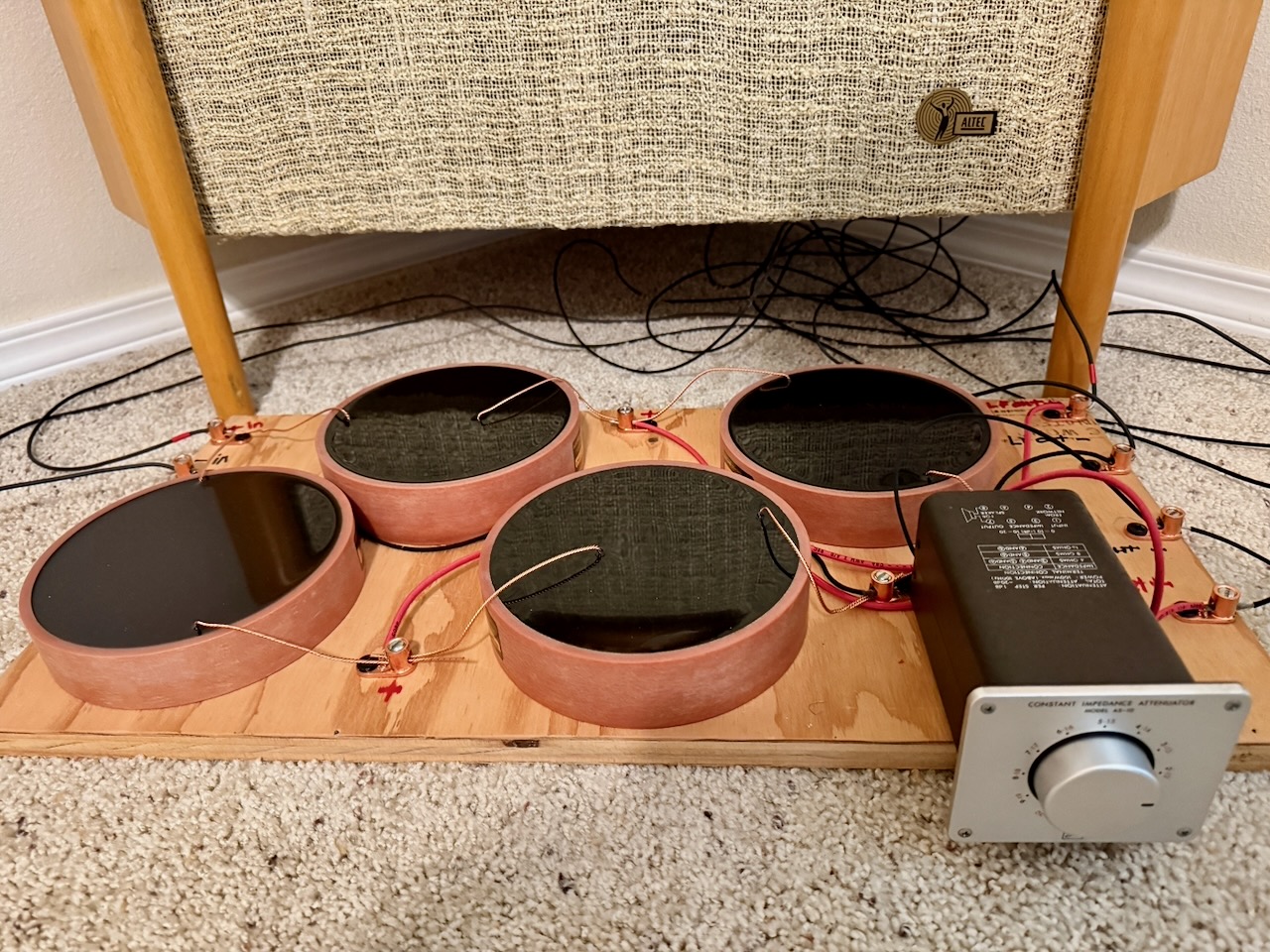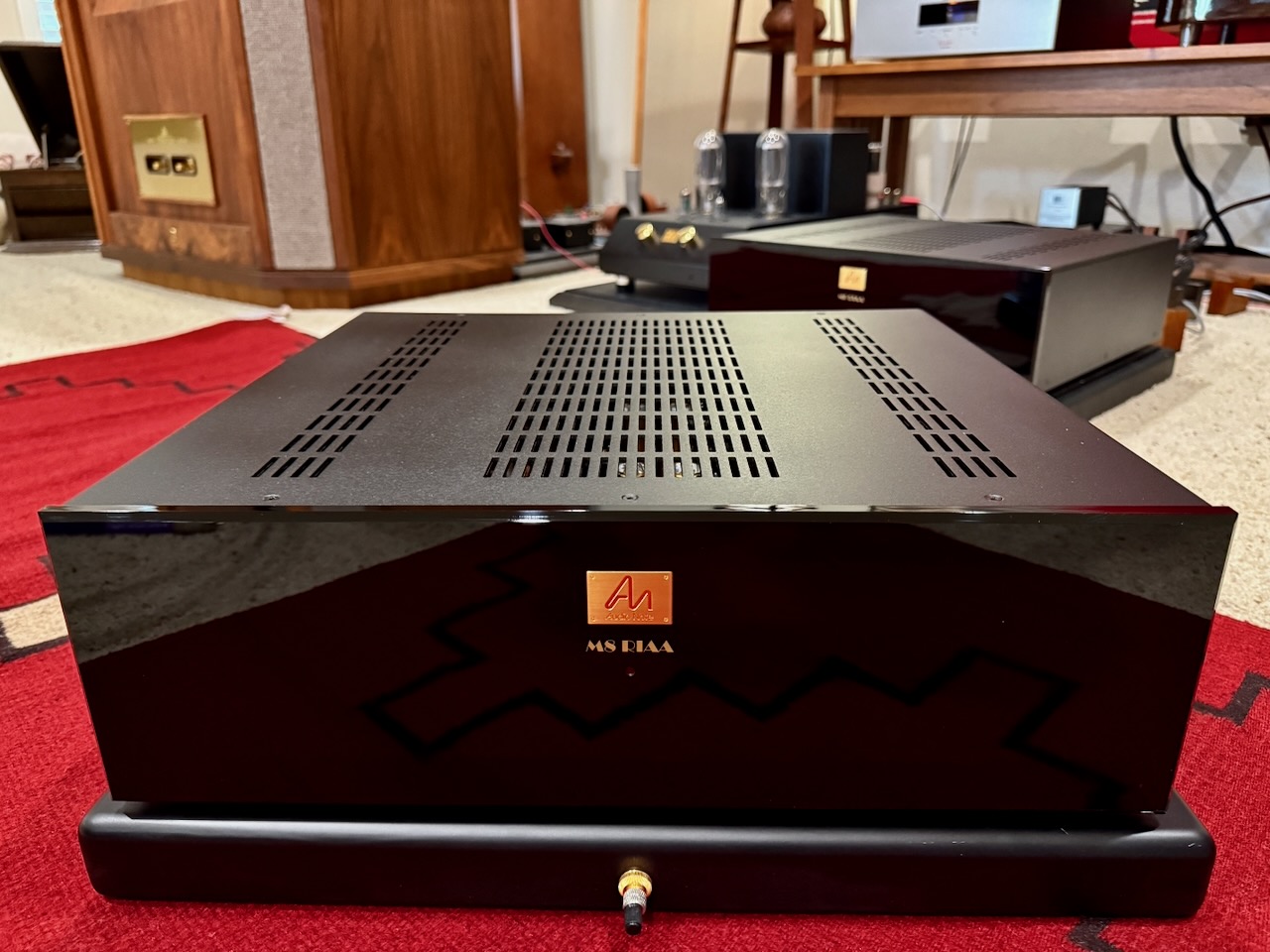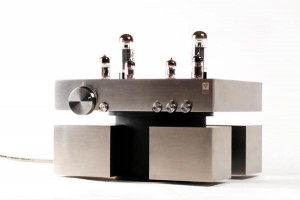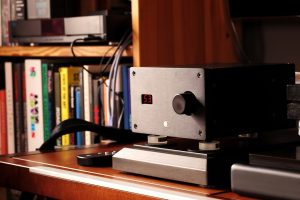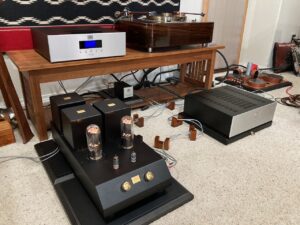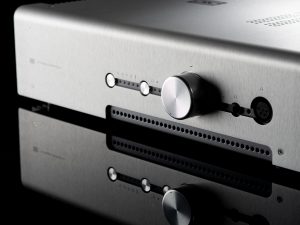"The splitter/driver stage is a paraphase type. I chose it because it is simple, straight forward, and works from 5k to 100k very well. I'm a big Magnavox fan and they used the paraphase in many of their designs. I know the benefits of fixed bias, and you know it's not that hard to adjust, but people today tend to shy away from amps they have to "mess with". A lot of audiophiles don't want to mess with adjusting the bias every few months, which is why I went with cathode bias. Each tube has its own cathode resister, precision 1% Mills. The tubes are AC heated as I think that DC heating make the amp sound too dull."
The excellent sonics and musicality of the Still Audio EL84 made me curious about the components Mark chose for it, so I asked Mark to tell me a little more about his component choices:
"I've always been a fan of Hashimoto transformers (which were also the favored choice of Don Garber—Jeff), and their frequency response charts are flat from 5Hz to over 100Hz, giving me a wide range to work with. My resistors of choice for this circuit are the Takman carbon film resistors, and they sounded better in my sound tests than the Kiwame and Amtrans resistors I tried. The bypass capacitors are Nichicon FG series (Fine Gold) audio caps and are fantastic caps for bypass caps. The coupling caps are Mundorfs. They take a long time to break-in but have a very smooth sound with solid bass."
"As far as tubes go, every tube type I tried sounded different. I think people should use the tubes that sound best to them for their audio system. Psvane tubes with jazz are super sweet sounding, while the Sovtek EL84Ms are great for rock and roll, for example. I chose the Mullards because they gave a nice balance that falls between the PSvanes and Sovteks. Mullard was also smart in putting the labeling on the correct side of the tube. Most of the time pins 4-5 heaters are on the outside of the chassis, which puts the labeling in front for you to see. I wish other tube manufacturers would do the same."
"The tube sockets are all PTFE with gold pins. The PTFE sockets hold the tube tighter, but they are softer than ceramic tubes sockets, so you have to be more careful not to scratch the PTFE with the tube pins when changing tubes. If they get scratched it won't affect the sound or the tightness, just the esthetics."
"For the prototype, I built it on 3 turret boards so I could change out parts easily, but the time and effort to build it that way was not cost effective. I was very pleased when I did the first printed circuit board (PCB), where I used extra thick solid copper traces. The PCB tightened up the sound, and took it in the direction of being quieter and deeper. I'm thinking with the turrets for each component the signal had to go from component to turret to wire to turret to the next component, and with the PCB it was just component to copper to component, through one piece of thick solid copper. There is still a lot of point to point wiring, and I used silver over copper with PTFE insulation everywhere except from the IEC to power transformer, where I used 14 AWG copper."
I also asked Mark about his voicing strategy for his integrated amplifier:
"I wanted to voice the amp to sound like a new-style tube amplifier, more of a clean sound, but with that tube magic. I wanted it to have finesse while maintaining a calm sensibility and listenable quality about it. If an amplifier is too bright it will sound amazing at first, but it will eventually annoy the listener. I wanted the bass to go as low and flat as I could get it without compromising the rest of the audio band. I achieved an overall pleasurable listening experience, with great spatial image and a big wide and tall sound stage, so I feel I have succeeded in my voicing goals. As a reference I used a McIntosh MC275 power amplifier and C22 commemorative edition preamplifier. I have to say I've been pretty happy with the results."
One of the features I love about the Still Audio EL84 integrated amplifier is the remote volume control, which is something I wish every integrated amplifier and preamplifier included.
"I designed my own remote-control system. I originally went out looking for one but could not find anything even close to my needs. I had to have a remote because I know people (including me) want that remote when the volume of this or that song needs to be just a little louder or quieter you can hit the button and get just what you want. It's pretty nice at the end of a long day."
"The remote is actually programmable to any remote but you would have to remove the bottom to push a small button on the remote board and watch the LED to program it. So easy though. Push the button, then push the volume up button 4 times until it flashes, then push the down button 4 times until it flashes and you're done—it's programmed to that remote. In the future I may put a hole in the bottom to allow the button to be pushed without removing the bottom."
Review Systems
For this review of the Still Audio EL84 integrated amplifier, I used two different audio systems so I could get broader insights into its musical & sonic performance than just one system would provide.
The first system used for this review is built around my aforementioned vintage (circa 1957) Altec 832A Corona loudspeakers, which I am having a musicality love affair with.
I'm still in the process of figuring out what equipment rack to use for this system, so for the moment a vintage cedar chest was pressed into service to sit components on. The Coronas are designed to be placed into room corners, thus their triangular shape, which makes it challenging to get them both in the photo in a wide room!
The Altec's are equipped with Spec RSP-AZ9EX Real Sound Processors (impedance compensators), Duelund DCA16GA tinned-copper speaker cables, the SPEC RSA-M3 EX Real Sound Amplifier, which is connected to wall AC with an Acoustic Revive Power Reference TripleC NCF AC power cord, and with Acoustic Revive RCA Absolute FM Interconnects (in for review) connecting it to a Mhdt Paradisea+ USB DAC.
The Mhdt Paradisea+ USB DAC is connected to wall AC with an Acoustic Revive Absolute Power Cord (in for review), and is connected with a Locus Design Group Polestar USB cable to my iMac computer that I use as a source to stream music and play CDs.
The second system (above) used for this review consisted of restored vintage Altec A5 Voice of the Theatre loudspeakers with Western Electric WE16GA internal wiring, Hiraga-inspired crossovers, a Leben CS-600 integrated amplifier, and a Leben RS-30EQ phono preamplifier.




